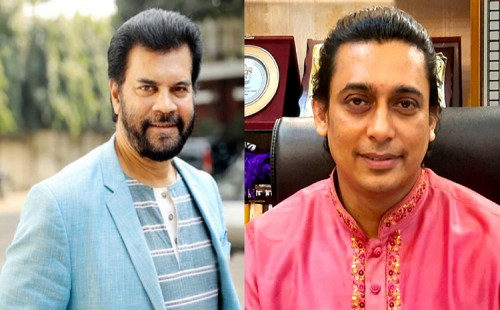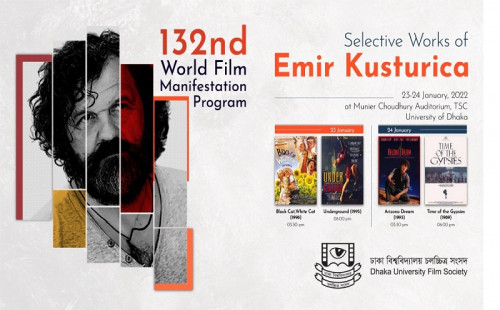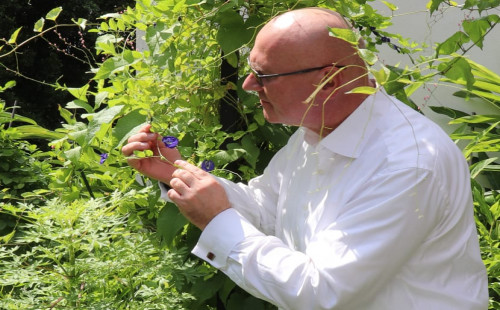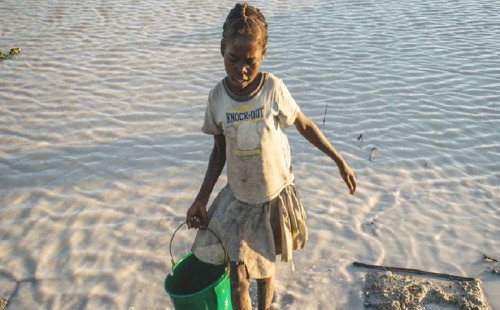Learning unlearning and relearning
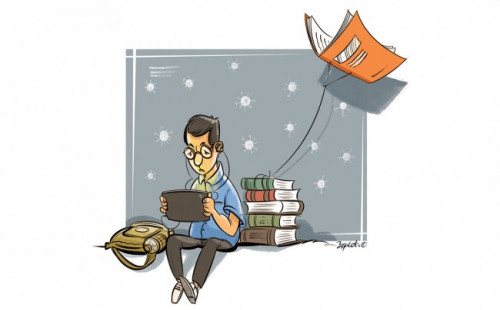
Growing up in the 80s, one of the silliest
things we used to do was to play loud music in our cassette decks. Two-in-ones
revolutionised our teenage years; the loud noise became synonymous with our
existential crises. I often wonder what we were trying to say, screaming,
Samantha Fox's "Touch me," Madonna's "Papa don't preach!",
Baltimora's "Tarzan Boy," or Pink Floyd's "We don't need no
education." Now, my YouTube list often takes me back to those silly days
and makes me realise how tolerant and flexible our parents were. Imagine the
hormonal rush of all teens of an entire area engaged in a beatbox competition
from their cribs covered with posters of Michael Jackson, Phoebe Cates, Rambo
and Led Zeppelin, and filling the air with rebel songs without any apparent
cause! We were like free range organic chickens compared to the kids today, who
are being processed to be lords in their own farms.
Back then, we would form clubs and libraries; we
would steal flowers from our neighbour's gardens to join the morning rallies on
Ekushey; prepare wall-magazines on Victory Day or Independence Day; go on a
moon sighting spree before Eid Day; or throw paint on our targets on April
Fool's Day. We were exposed to a wide array of cultural bytes. Through this
process, we acquired the ability to engage in divergent thinking, and while
doing so, the life skills of creativity, curiosity and flexibility were
inculcated in us. They became a part of our essential selves, and only today
they are being touted as essentials.
Creativity is a buzzword, which is being
promoted as a 21st century skill that we must first unlearn and relearn. If you
ask me, the issue of relearning and unlearning underlies a major flaw in our
education system. Somewhere down the road, our formal schooling system has
messed up our creativity big time. Looking back, I know why we were playing
those songs so loud. They were voicing our inner rages, concerns and desires. We
did not want to be "another brick in the wall". We did not want to be
preached to. We wanted to be back with nature like a jungle boy or be touched
to know that we were alive. But with the advent of airpods, our Generation Z is
simply listening to themselves. There is no real network, except for virtual
ones. Their creativity is more individualistic than collaborative as they are
constantly being pressured to carve their own niches, find their own jobs
through start-ups, and become their own bosses. It's about time, we reinvent
creativity in our education system to address the issue of creativity of our
next generation. We can take our cue from one of the pioneers in this
field.
Undoubtedly, one major exponent of creativity in
education in our part of the world is Rabindranath Tagore, the founder of
Shantiniketan. He was among the first to point out the negative effects of
formal schooling. For him, the traditional teaching in India was mechanical and
responsible for killing the passion, creativity and individualism of a student.
In contrast, the rich and artistic experience
that he had in his Jorasanko household gave him the subconscious learning that
shaped his artistic attitudes towards life. In his essay My
Reminiscences, Tagore wrote, "Most members of my family had some
gift—some were artists, some poets, some musicians—and the whole atmosphere of
our home was permeated with the spirit of creation." This creative
atmosphere was developed by the patriarch Debendranath Tagore himself. When Tagore
was 12, his father took him to the Himalayas during which the child Tagore
realised, "The chains of the rigorous regime which had bound me snapped
for good when I set out from home." One simple step out of the familiar
taught him to use imagination to deal with the unfamiliar. He learnt to look at
nature as well as to look into the lives of the people around him. This sojourn
was instrumental for Tagore's relearning process.
Tagore recalled how his imagination flourished when he first encountered the
lilting rhyme jol porey, pata norey in Vidyasagar's
primer Borno Porichoy. He felt that the sound pattern took him
beyond the purpose of the spelling lesson. He visualised the way the leaf was
touched and moved by the drop of water to compare it to the way his mind was
connected with the world. The lesson became a life lesson that underscored the
use imagination for making sense of the world.
With the onrush of visual information—Netflix,
YouTube, Instagram—our children are being supplied with infographics. They do
not have to use their imagination even when they fall in love for the first
time. They will never know how it feels to wait for the letter of a pen-friend
in an age of instant messenger services. Their needs have changed, so have
their creativity. Then again, it would be wrong to say that our children are
not creative enough. Their creativity is of a different scale. A simple browse
through the urban dictionary tells us how creative our younger generation has
been in codifying its emotions. Who would have thought of cryptic expressions
such as "lol", "ty", "rofl" or "btw"
otherwise?
As educators, the challenge for us then is to
understand what moves a child. Our job is to do what Vidyasagar has done
earlier for Tagore: create a platform or an interface that will open the
creativity of a child. The children need to be given the right text and context
that will excite their imagination. They need to be given right educational
materials that will encourage them to make sense of the world. Expecting them
to merely memorise information that can be processed through the machine will
never appeal to them. For instance, nobody needs to memorise the times table
anymore, but everybody needs the computational skills to understand the
sequential growth during an act of multiplication.
Recent studies show that creativity can be
taught and cultured. A genius is not born, a genius can be made. For that we
need to create the right atmosphere. Debendranath Tagore is a case in point.
Only someone who is willing to learn what moves a child can move the system.
Let us unlearn and relearn before we teach what to learn. At the same time, let
us allow our students some freedom to realise what they want to learn before we
hit the undo button to delete what they have been learning all this while.
Often, we mix up the issues of learning with
teaching. Teaching cannot happen without learners. But in the school of life,
learning can happen without teachers. As educators, our job is to make learning
rewarding and exciting so that they continue to learn even when the teaching
sessions are over. At a policy level, we need to keep the final outcomes in
mind. As teachers, we need to instill passion in them, encourage them to get
interested in problem solving. We need to expose them to various tools. Excite
them about what they learn and how they learn.
Let's see, for instance, how Facebook works and
remains attractive to our young generation. For instance, we don't ask our
children to go to Facebook and spend some time there. Still they are drawn to
it. It is probably because Facebook presents itself as an interface that offers
a seeming freedom over the creation and curation of the content. We need a
similar creative model that will make learning flexible, imaginative and
innovative.
In our current emphasis on preparing the next
generation for the knowledge economy as well as for the Fourth Industrial
Revolution, we often perceive a pedagogical model that thinks of changing the
lifestyles while giving them the right skillsets to become leaders. I think
it's also important to allow them to find their own vocations, career paths and
life-interests. For that, they need to be exposed to various models of
innovations and creativity, like we were in the 80s.
.png)




